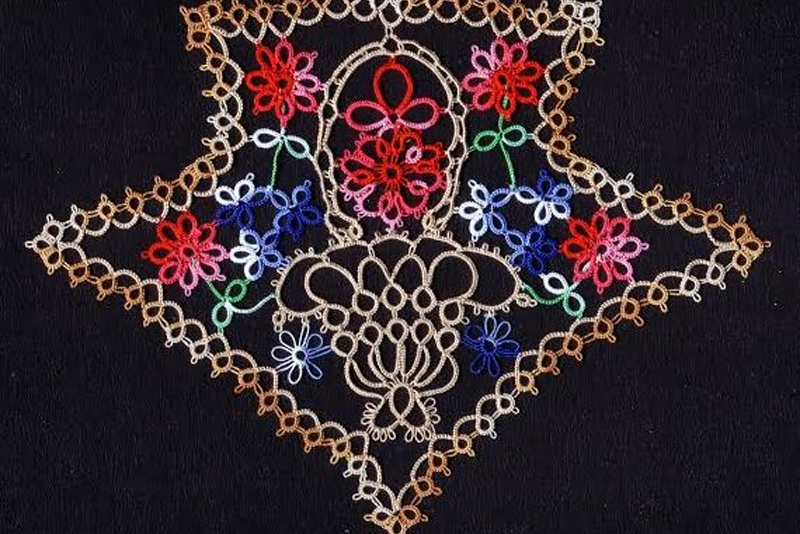I was waiting for my computer to cycle through 1-23 updates before I could set to work. So I picked up the next book on my stack to study. It was a 1885 guide for young ladies. I read the frontispiece where it lists all the art and crafts it contained. There was Berlin work, crochet, drawn-thread work, embroidery, knitting, knotting or macramé, lace, netting, Poonah painting and finally, tatting. I actually turned to the section on Poonah painting first as the term was new to me. I read through the pages and found that it means stenciling! I think the term we use today may be theorem stenciling.
After satisfying my curiosity (not an easy thing to do I admit) I went on to the tatting section. The tutorial illustrations were those I have seen before as were the 8 patterns given. Illustrations #13 and #15 I found puzzling. #13 shows two closed rings with a "chain" between them. But it looks to me that the chain was not tatted but wrapped! Now this is 1885 and the tatted chain should have been well known I thought. Hmmm. So I studied #15. It is a series of half closed rings. Unremarkable except for the fact that the core thread wrapped around itself in a figure eight. So, I think these were chains not rings after all. Now, the puzzle is to determine how the thread got wrapped around like that. The instructions are for shuttle tatting. Unless I am misinterpreting everything, this could only have been tatting without a shuttle, i.e. tatting with a needle used as if it were a shuttle, needle tatting, or finger tatting.

So I read on. And, yes, I have misinterpreted the illustrations. From pg. 102 notes about illustration #15:
"In working with two threads, it must always be remembered that the scallops just finished should be turned downwards. No. 15 shows another mode of working with two threads. In this case, the helping thread laid round the left hand must have its two ends firmly held through the shuttle thread; and the latter must lie in front of the two ends of the loop (the thread round the left hand.) The firmly held ends, before the loop of the shuttle thread is drawn together, must be drawn through the loop from the upper part downwards, so that the threads look twisted.
I have tried it twice but no luck yet. Let me know if any of you get it right. I would be happy to add a photo of the sample to this page.
There is a copy of this book available for a free download. The link is listed here:
http://www.bellaonline.com/subjects/3137.asp
Here's the latest article from the Tatting site at BellaOnline.com.
Sunflower Motif by Betty Albertson
This Sunflower by Betty Albertson offers exercises in making the split chain, forming dense centers from chains, climbing out through a mock picot to reduce the number of cuts to the thread and cluny weaving.
http://www.bellaonline.com/articles/art183400.asp
Please visit tatting.bellaonline.com for even more great content about Tatting.
To participate in free, fun online discussions, this site has a community forum all about Tatting located here -
http://forums.bellaonline.com/ubbthreads.php?ubb=postlist&Board=39
I hope to hear from you sometime soon, either in the forum or in response to this email message. I thrive on your feedback!
Have fun passing this message along to family and friends, because we all love free knowledge!
Georgia Seitz, Tatting Editor
http://tatting.bellaonline.com
One of hundreds of sites at BellaOnline.com







